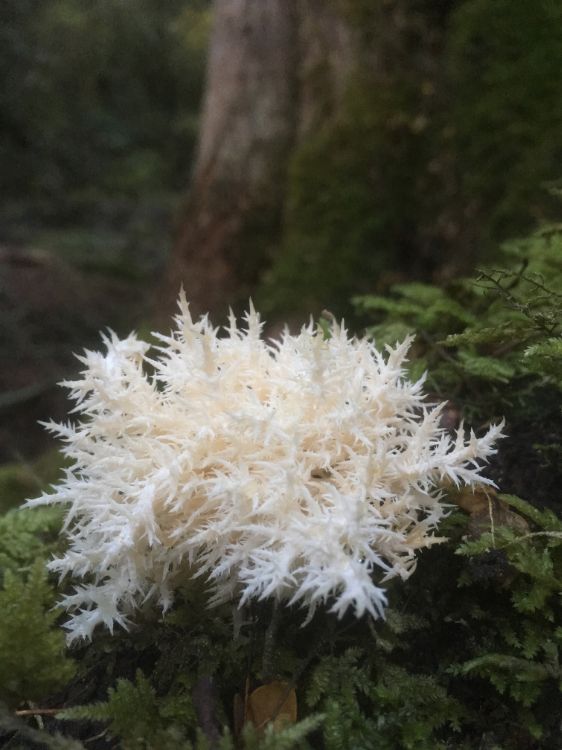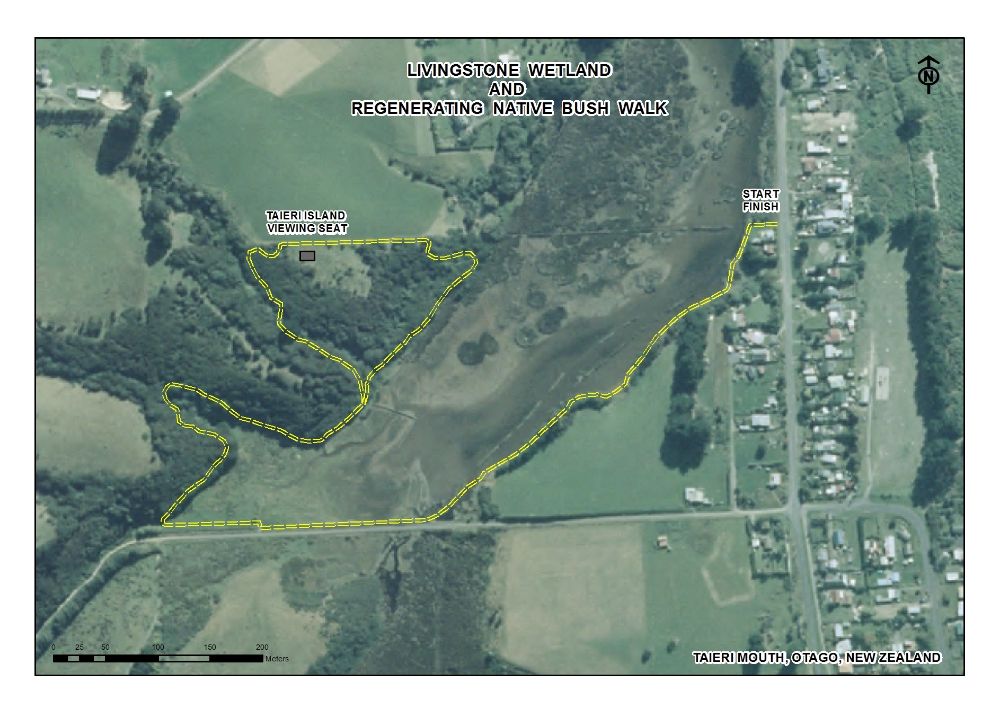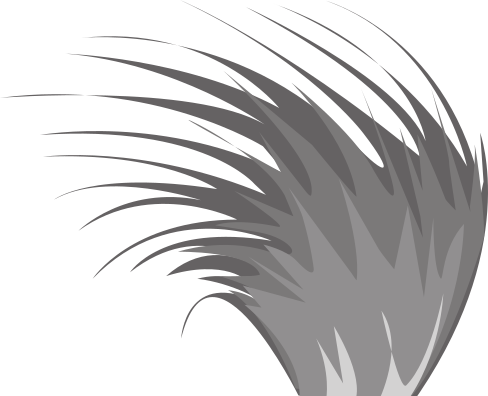Past Events
Field Trip on Saturday 2nd of November 2019, 08:30 AM (6 years ago)
Contact: John Steel | john.steel@otago.ac.nz | 021 2133 170
Andersons Lagoon is a sizeable wetland comprising a shallow lagoon resulting from the formation of a sand dune barrier limiting the egress of the waters of Stony Creek to the sea. The lagoon is contained in a steep-sided valley resulting in some narrow bands of vegetation types along the shore. The track to the lagoon passes through a QEII covenant which was planted with native trees some years ago. The dune system has led to an inland sand spit with primarily exotic species extending from the dunes towards the lagoon, where native wetland plants are more common. The embouchure at the northern end of the dunes is easily crossed and a stairway leads to the top of a cliff from where a pathway leads to the mouth of the Shag River. A seldom visited area and well worth the trip. Leave the Botany Department car park at 8.30 a.m.
Field Trip on Saturday 19th of October 2019, 09:00 AM (6 years ago)
Contact: John Barkla
On this trip we will visit several stunning coastal sites in the northern Catlins including Jacks Bay and blowhole, Pounawea Scenic Reserve, Cannibal Bay and Nugget Point. We’ll encounter coastal rata forest, dune slacks with rare species, shrublands and herbfields. We will depart on Saturday morning and spend Saturday night at the Pounawea Motor Camp http://www.catlins-nz.com/pounawea-motor-camp/ 2.5 km from Owaka. This tranquil camp has cabins and camping sites surrounded by native forest on the edge of an estuary. You are responsible for your own accommodation arrangements and catering. Please let John Barkla know if you are intending to come by Monday 14 October. Travel arrangements will be advised.
Talk / Seminar on Wednesday 9th of October 2019, 05:20 PM (6 years ago)
Contact: Gretchen Brownstein
The Botanical Art and Illustration Courses at Olveston began in January 2017. An Advanced Botanical Art and Illustration Course was later held beginning June 2018 and out of that course came the first Botanical Art and Illustration Exhibition at Olveston, which was held in December 2018. The classes have been hugely popular. The exhibition of original botanical artwork was of very high quality and created great public interest.
The courses are taught by Wayne Everson, who is an award winning teacher and practising artist. He holds a Master of Fine Art degree from RMIT University, Melbourne, and has taught art at tertiary level for many years in New Zealand and overseas. Wayne Everson will give the talk, which will centre on the success of the classes at Olveston and their botanical focus.

Field Trip on Saturday 21st of September 2019, 09:00 AM (6 years ago)
Contact: Robyn Bridges | 021 235 8997
Akatore is a remnant of diverse coastal shrubland at the mouth of Akatore Creek, 45 minutes south of Dunedin. Some special features of this site include the diversity of shrub species and threatened species such as Coprosma obconica, Olearia fragrantissima, Melicytus flexuosus and Carex littorosa with the possibility of our discovering other threatened species. We may also visit the adjacent coast where the threatened cress Lepidium tenuicaule is present as well as Myosotis pygmaea. It is recommended to bring extra foot wear to change into in case they get wet!
Talk / Seminar on Wednesday 18th of September 2019, 06:00 PM (6 years ago)
Contact: Gretchen Brownstein
Speaker: Hamish Campbell (Emeritus Scientist, GNS Science). Location: Castle 1, University of Otago (drinks and nibbles starting from 5:15 in the concourse).
This is an illustrated talk exploring the geological evidence for the emergence of land and onset of terrestrial conditions in New Caledonia (northern Zealandia) in the Oligocene, and in the Chatham Islands (eastern Zealandia) in the Pliocene. These age interpretations have significant implications for our understanding of the antiquity and biodiversity of the floras of both New Caledonia and the Chatham Islands.
Field Trip on Saturday 31st of August 2019, 09:00 AM (6 years ago)
Contact: Sarah Kilduff | Sarah.Kilduff@dcc.govt.nz
We will go and see what we can find. Contact Sarah Kilduff (Sarah.Kilduff@dcc.govt.nz)
Talk / Seminar on Wednesday 28th of August 2019, 05:20 PM (6 years ago)
Contact: Gretchen Brownstein
Unfortunately, Toni is not longer able to speak this Wednesday, so David will be giving us a talk instead.
Dr David Orlovich, Department of Botany, University of Otago
Through many wonderful collaborations, we have been using new genomics tools to explore the past, present and future of our native forests and the fungi that support them. We used genotyping by sequencing to study the population genetics of silver beech. I will give an update on our research that gives tantalising clues to how silver beech spread in the South Island following the last ice age. However, beech trees can’t grow on their own, and we are also discovering many new species of ectomycorrhizal fungi that help beech trees to grow. The distribution of these fungi is still poorly understood, and again, new genomics tools will come to the rescue. We aim to understand if barriers to beech tree dispersal are also barriers to the spread of fungi. Watch this space! Finally, whole genome sequencing is allowing us to understand the genetic basis for the incredible diversity of mushrooms and truffles in our forests, and I will give an update on our research that seeks to understand the mechanisms that give rise to so many truffles in the NZ bush.
Talk / Seminar on Wednesday 10th of July 2019, 05:20 PM (6 years ago)
Contact: Lydia Turley
Speaker: Laura Van Galen. The symbiotic relationship that exists between beech trees and ectomycorrhizal fungi has important implications for beech forest regeneration and the stability of forest boundaries. I am doing a PhD to investigate this relationship and provide practical information to assist forest restoration projects. I am conducting a large-scale survey of ectomycorrhizal fungi in beech forests across the South Island of New Zealand, to better understand the influence of host species, soil properties, patch size and condition, and other environmental factors on ectomycorrhizal diversity and community assembly. I am also establishing a plot experiment in ex-pasture where beech seeds will be sown under varying conditions, to determine the relative importance of fungi compared to other factors (such as soil nutrient levels, grass competition, the availability of shelter and herbivory) for restoration project success.
Please note the new date.
Field Trip on Saturday 6th of July 2019, 09:00 AM (6 years ago)
Contact: John Steel | john.steel@otago.ac.nz | 021 2133 170
A chance to check out some of the smaller denizens of our local bush and learn the differences between mosses, liverworts and hornworts. Leave from the Department of Botany car park at 9.00 a.m. Contact John Steel john.steel@otago.ac.nz.
Talk / Seminar on Wednesday 12th of June 2019, 05:20 PM (6 years ago)
Contact: Allison Knight
We are privileged to have Cathy Rufaut and Professor David Craw (winner of the 2018 Otago University Distinguished Research Medal) to talk to us about their ongoing geo-ecology project at the Wangaloa Coal Mine Reserve and how they have monitored re-vegetation on this challenging site.
Field Trip on Saturday 8th of June 2019, 09:00 AM (6 years ago)
Contact: John Barkla
Okia Reserve is a large coastal reserve on the Otago Peninsula that is jointly owned by the DCC and Yellow-eyed Penguin Trust. It comprises an old dune system that is rapidly changing from its dominant bracken cover to woody coastal species. The hollows between the dunes hold a variety of wetlands that include turf, bogs and ponds. The Otago Regional Council regard the dune hollow vegetation to be the best example in the Otago Coast Ecological Region. Along with the Pyramids - a significant geological feature, and Victory Beach - the longest beach on the Peninsula, there's plenty to keep us occupied. We'll do a walk that encompasses all these features. Meet at Botany Department carpark at 9am or the Okia Reserve carpark at the end of Dick Road at 9.30 am. Contact John Barkla 03 476 3686 or jbarkla@doc.govt.nz
Field Trip on Saturday 25th of May 2019, 08:30 AM (6 years ago)
Contact: Allison Knight
Fungal Foray to Knights Bush, led by keen mycologist Andy Nilsen. This forest bordering the Clutha River at Tuapeka West has many different ecosytems to explore. Plantings of macrocarpa, pine, eucalyptus and Douglas fir grow on the edge of a diverse area of native forest. Inside the forest are stands of old kanuka, silver and mountain beech, ancient totara and matai on the shady slopes, with mixed podocarp/broad leafed forest on the river flat and a kowhai/korokia/divaricating shrub mix on the sunniest slopes. A list of known fungi from the area will be circulated and there will be a prize for the person who adds the most new species to the list! Meet at the Botany Dept car park at 8.30 am to carpool. 4WD to cross the access paddocks and footwear with good grip for the steep slopes recommended. Be prepared for all weathers. Contact Allison Knight 027 4878265.

Talk / Seminar on Wednesday 8th of May 2019, 05:20 PM (6 years ago)
Contact: Gretchen Brownstein
The photographic competition is a popular and eagerly anticipated event for anyone interested in botanical photography. Enter your best photos and learn what makes a good photograph and how to improve your photographic skills from our panel of expert judges. Your photographs may be chosen for the BSO calendar so this is your opportunity to have one month of fame. Start organising your entries now and don't wait until the last minute.
We will hold the AGM prior to the photography discussion. Please read the minutes of the last meeting and Chairs and treasurers reports.
Field Trip on Saturday 27th of April 2019, 09:00 AM (6 years ago)
Contact: Gretchen Brownstein
This is a family run restoration project of a the wetland and forest remnant. The project has been going a number of years now and been quite a bit of success with reforestation, increased birdlife and pest eradication. Recently they hosted the bird watching society who assisted them greatly with a bird count and a list of birdlife in the wetland and native bush. Now the Greens have asked the BSO to help create a plant species list for the native bush. We will spend the day exploring the tracks around the bush and wetland to compile a species list. Meet at Botany Department carpark at 9am. Contact Gretchen Brownstein 021 065 8497 or brownsteing@landcareresearch.co.nz.

Talk / Seminar on Wednesday 10th of April 2019, 05:20 PM (6 years ago)
Contact: Gretchen Brownstein
Speaker: Maia Mistral.
Willows introduced to New Zealand can be subject to bad press. Often neglected in the debate are willow species that humans have depended upon for centuries for their high utility values. One such group of willows selected over time specifically for their flexibility and amenability to cultivation are referred to collectively as basket willows. For those interested in learning willow basket making or considering it as a vocation, a lack of access to suitable willow can be a major barrier to progress. In fact, securing a reliable supply of raw material has been an ongoing concern even amongst professional willow basket makers who first began to work in New Zealand from the mid-19th century. This talk will use insights from the past to discuss the relative value of importation, wild harvesting and traditional coppice management of selected basket willow varieties as pathways for securing material supplies in the future.
